Update: The final version of V1.5 with 40+ features is released on 3/1/12.
V1.5 beta, 2-nd update, released today, added support for test run history, customization of performance graphs and several other enhancements.
1. StresStimulus navigation tree received a facelift: two-dozen icons positioned on every tree node will make it easier to navigate StresStimulus quickly.
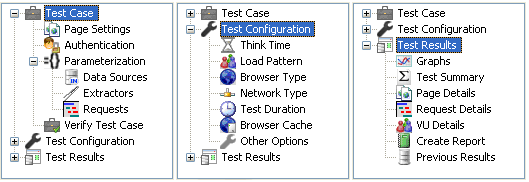
2. Test runs history.Previously, test results could be examined only immediately after a test run is completed. You could print and save reports; however the underlying raw data got discarded after closing Fiddler or launching the subsequent test run. Now you can store and recall every bit of information collected during the test runs at a later time. In the "Test Results" sections the" Previous Results" node displays the test run result sets. Every result set can be loaded and re-examined using the same reporting options available for the last test run.
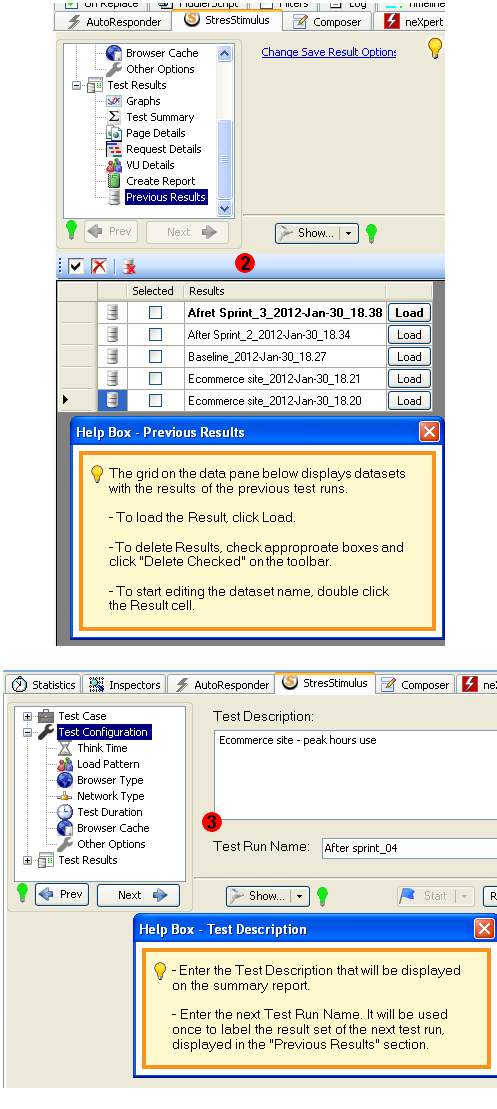
3. Test Run Name: In the "Test Configuration" section, enter the Test Run Name. It will be used to label the current test run result set as follows:
<Test_Run_Name>_<Test_Run_timestamp>
If the Test Run Name Box is left blank, then the result set of the current test run that will have the following format:
<Test_Name>_<Test_Run_timestamp>
4. StresStimulus status line information:when the StresStimulus tab is selected, the Fiddler status line displays the current Test name, the current Test Results name and the percentage of result storage capacity used.
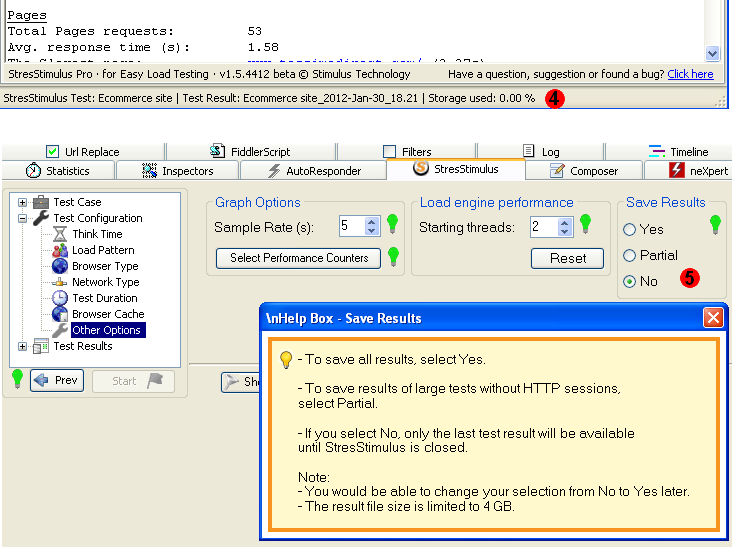
5. More options to maintain result sets:Depending on the requirements to re-examine test results in the future, user can specify whether to store test result sets or not. This option is available in the "Test Configuration" -> "Other Options". A result set can store up to 4 GB of data. For very large and long tests (that can last up to several days), when such storage size is insufficient, a third option is available - to store a partial result. The partial result set includes all reports and underlying graph data, but excludes the actual content of the HTTP sessions.
6. Better organized test files: for every test StresStimulus alongside with main configuration file .ssconfig creates a folder with the test name, where all other test files are stored including, all result sets, data sets used for parameterization, and other auxiliary files. As a result, the <My document folder>\Fiddler2\StresStimulus\ folder looks much cleaner. Deploying a test to other machines became easier.
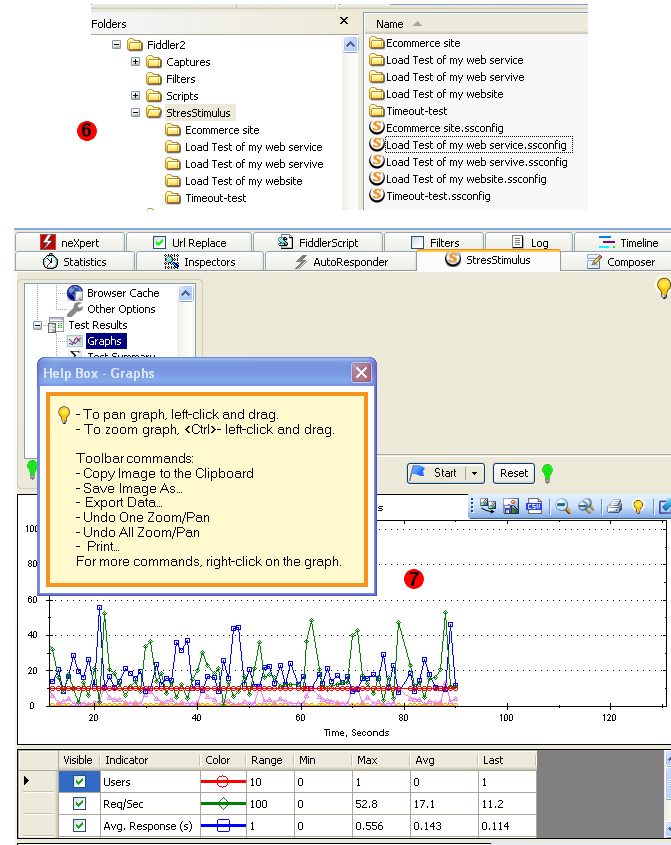
7. Examine any portion of the graph under a modifying glass.Combine zoom and pan steps to customize graph look the way you like.
- To zoom an area to full graph, select the area.
- To pan graph, (CtrI+left-click) and drag.
8. Graph toolbar and context menu. The following operations with the graphs are accessible from the toolbar and context menu:
- Copy Image to the Clipboard
- Save Image As…
- Export Data…
- Undo One Zoom/Pan
- Undo All Zoom/Pan
- Print…
- Page set up…
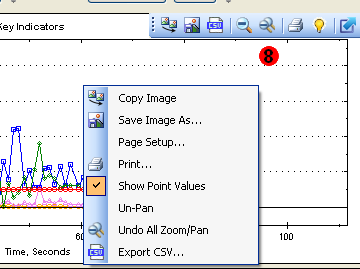
9. Parameterizing URLs in RESTful websites: Using the parameterization editor is expended to GET requests that do not have query strings. This means that for example, if you recorded the request http://example.com/resources/item01, then you can replace the "item01" with a dataset value or extractor.
To navigable to other parts of the v1.5 release notes, click the links below:
v1.5 beta is available for download here.